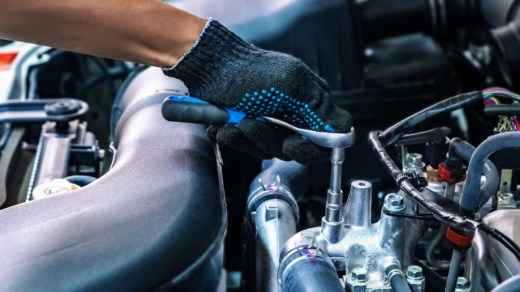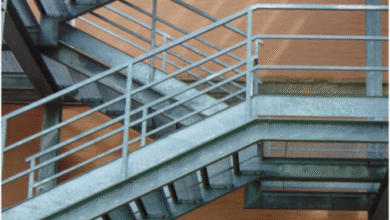Acura Transmissions: Engineering Excellence in Luxury Performance

The Birth of Japanese Luxury
Acura’s establishment as Honda’s luxury division in 1986 marked a pivotal moment in automotive history, introducing Japanese luxury to markets previously dominated by European manufacturers. Central to Acura’s success was their transmission technology, which combined Honda’s reliability with sophisticated engineering aimed at delivering a premium driving experience. These transmissions showcased how Japanese manufacturers could create gearboxes that matched or exceeded European standards while maintaining superior reliability and longevity.
The philosophy behind Acura transmissions differed from typical luxury car approaches. Rather than focusing solely on isolation and smoothness, Acura engineers sought to create transmissions that engaged drivers while still providing refinement. This balance resulted in gearboxes that could cruise quietly on highways yet respond instantly when performance was demanded. The dual personality perfectly aligned with Acura’s vision of “Precision Crafted Performance.”
Early Innovation and Development
Early Acura models featured transmissions derived from Honda’s proven designs but with significant enhancements. The Legend, Acura’s flagship, showcased advanced four-speed and later five-speed automatic transmissions that set new standards for shift quality and durability. These transmissions incorporated features like grade logic control, which prevented hunting between gears on hills, demonstrating Acura’s attention to real-world driving conditions.
The introduction of the NSX supercar required Acura to develop transmissions capable of handling exotic car performance levels. The result was a manual transmission that became legendary for its precise shift action and durability under extreme conditions. The NSX’s transmission proved that Acura could engineer gearboxes matching anything from established supercar manufacturers while offering Honda’s renowned reliability. This achievement elevated Acura’s reputation among enthusiasts and established benchmarks still referenced today.
JDM Specifications and Performance
For those seeking replacement or upgrade options, used JDM Acura transmission units often provide superior specifications compared to standard models. Japanese market Acura transmissions, particularly from performance-oriented models, frequently featured enhanced internals and programming optimized for spirited driving. These transmissions represent excellent values for enthusiasts looking to improve their vehicle’s performance characteristics while maintaining factory reliability.
The development of Acura’s Sequential SportShift automatic transmissions marked another innovation milestone. These transmissions allowed manual gear selection while retaining automatic operation convenience, appealing to drivers who wanted engagement without sacrificing daily usability. The system’s quick response times and rev-matching capabilities demonstrated Acura’s commitment to creating transmissions that enhanced the driving experience rather than merely facilitating it.
Advanced All-Wheel Drive Integration
Acura’s approach to all-wheel-drive systems required sophisticated transmission integration. The Super Handling All-Wheel Drive (SH-AWD) system showcased how transmissions could work with advanced drivetrain components to deliver exceptional handling and traction. This technology distributed power not just between front and rear wheels but also side-to-side at the rear, requiring transmissions engineered to handle complex power delivery requirements while maintaining smooth operation.
The reliability of Acura transmissions stems from meticulous engineering and quality control. These units regularly achieve 200,000+ miles with proper maintenance, outlasting many vehicles they’re installed in. This longevity results from features like efficient cooling systems, high-quality friction materials, and conservative engineering that prioritizes durability over aggressive performance claims. Such reliability makes used Acura transmissions attractive options for various applications.
Maintenance Best Practices
Maintenance requirements for Acura transmissions reflect their premium positioning. While these units tolerate longer service intervals than some competitors, adhering to recommended maintenance schedules ensures optimal performance and longevity. Using specified fluids remains crucial, as Acura transmissions often require particular formulations to maintain proper operation. This attention to maintenance details rewards owners with transmissions that perform like new even after extensive mileage.
The manual transmission options in Acura vehicles deserve special recognition. From the close-ratio six-speeds in the RSX Type-S to the refined units in TSX models, these transmissions offered enthusiasts engaging driving experiences with excellent shift quality. The availability of limited-slip differentials in certain models further enhanced performance capabilities, making these transmissions popular for both street and track applications.
Modern Technology and Innovation
Technological advancement in Acura transmissions continued with dual-clutch designs and advanced torque converter automatics. These newer transmissions built upon decades of experience while incorporating cutting-edge technology. The eight-speed dual-clutch transmission in certain models delivered lightning-quick shifts while maintaining smoothness during casual driving, exemplifying Acura’s ability to blend performance with refinement.
The aftermarket support for Acura transmissions remains robust, with specialists offering everything from basic rebuilds to performance enhancements. This support network ensures that even older Acura transmissions remain viable options for enthusiasts and repair shops. The interchangeability of certain components with Honda applications further expands parts availability and modification options.
Environmental Considerations
Environmental considerations influenced recent Acura transmission development, with efficiency improvements that don’t compromise performance or reliability. Modern Acura transmissions contribute to reduced emissions and improved fuel economy through features like expanded lock-up converter operation and optimized gear ratios. Even older designs, when properly maintained, deliver efficiency levels competitive with newer transmissions from other manufacturers.
The future of Acura transmissions looks promising as the brand continues investing in both traditional and electrified powertrains. The integration of hybrid systems with sophisticated transmissions demonstrates Acura’s commitment to performance regardless of power source. This forward-thinking approach ensures that Acura transmissions will continue evolving while maintaining the core values that established their reputation.
Conclusion
In summary, Acura transmissions represent the successful marriage of luxury refinement and Honda reliability. From early automatic transmissions that redefined smoothness standards to modern dual-clutch units delivering supercar-like performance, Acura has consistently pushed transmission technology forward. Whether in classic models or current offerings, these transmissions embody precision engineering that enhances every driving experience. Their proven durability, combined with strong aftermarket support, ensures that Acura transmissions remain excellent choices for those seeking premium performance and long-term reliability.




